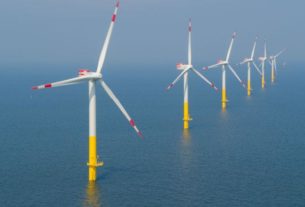
Krabi’s fragile ecosystems are under threat from our dependency on fossil fuels. Photo: Kallerna
Stakeholders and villagers in Krabi’s Neua Khlong district have been deeply divided about the controversial plans of the Energy Generating Authority of Thailand (EGAT) to build a B60 billion coal-fired power plant in addition to a seaport for unloading and transporting imported coal.
Proponents argue that energy demand in Southern Thailand is already outstripping local supply, and that the two projects are necessary to increase EGAT’s electricity supplying capacity in Southern Thailand, by at least 870 megawatts when the plant is aimed to open in 2019.
EGAT currently operates four power plants in the South: a 340 MW natural gas, fuel and oil fed plant in Krabi’s Khlong Neua district; a 244 MW natural gas and diesel fired plant in Surat Thani’s Phun Pin district, a 731 MW natural gas plant in Songkhla’s Chana district; and an 824 MW natural gas plant in Nakhon Sri Thammarat’s Khanom district.
Although the combined maximum capacity of these plants is about 2.1 gigawatts (2,100 MW), EGAT has reported its actual operational capacity for the South at only 1.6GW, pointing out that the current demand exceeds 2.2 GW, which is why the region depends on the country’s central power grid to supply the excess 600 MW.
Through its subsidiary Electricity Generating Co (EGCO), EGAT is planning to open a new 930 MW natural gas plant adjacent to the site of the old Khanom plant, with the old plant to be decommissioned and the new plant to commence operations by 2016. Additionally, the state-owned power utility is looking to open a second Chana plant this year, which would add 800 MW to the grid when it opens.
Using as a precedence last year’s region-wide black-out that left more than 8 million people in the dark for hours – causing an estimated B10 billion in damages – EGAT insists that it must go forward with the development of Krabi’s coal sector.
Opponents, however, argue that the planned projects will pose dire consequences for Krabi’s coral reefs, sea grass, mangroves and nursing grounds for aquatic species – not to mention air pollution and further depletion of the planet’s finite supply of fossil fuels.
“EGAT must acknowledge the threats that coal brings to Krabi,” said Chariya Senpong, Climate and Energy Campaigner at Greenpeace Southeast Asia.
“We fear that the public scoping for the Ban Klong Ruo Coal Seaport project will be no different to the one organised earlier for the coal plant.”
Ms Chariya is referring to a series of public hearings, the most recent held last Sunday (March 9), as part of development project requirement for conducting an environmental health impact assessment (EHIA).
“Both assessments [for the power plant and seaport] identified only the impacts that they [EGAT] are able to mitigate, and plays down the environmental, societal, and economic harm the project will cause. The reports will just be procedural compliance for EGAT to carry on with the project,” noted Chariya.
Planned for Krabi’s Taling Chan subdistrict – about half way between Mueang Krabi and Koh Lanta – the Ban Klong Ruo Coal Seaport project is part of EGAT’s strategy to find ways to transport imported coal from Indonesia, Australia and Africa, to the coal-fired plant in Khlong Kanan subdistrict, also in Khlong Neua district.
Last week at a press conference held in Bangkok, energy experts and representatives from the tourism association of Koh Lanta warned the public about serious consequences from the building of the Ban Klong Ruo Coal Seaport, which is planned for a site that lies in an area listed as wetlands of international importance.
“Krabi is the ‘Emerald of Andaman’, a world class tourist destination that is not only well-known for its beauty but is also rich in marine biodiversity,” said Therapot Kasirawat, Chairman of the Koh Lanta Tourism Association. “These projects are in opposition to the Krabi development plan which focuses on eco-tourism for economic development.”
According to a press release by Greenpeace, throughout the year, including in the [southwesterly] monsoon season, the unloading of coal from larger ships to smaller ones will take place at sea around Koh Lanta. The coal will be unloaded again at Ban Klong Ruo Coal Seaport to a 8.4 kilometre-long conveyor belt in order to deliver coal to the power plant.
In addition to the severe damage it could cause to Krabi’s natural resources, the watch-group says the project will also have detrimental consequences on sustainable livelihoods and local fisheries.
“Greenpeace is calling on EGAT to cancel all coal development in Krabi and create an Andaman Sanctuary for Environmental Protection in the sea area around Ranong, Phang-Nga, Krabi, Phuket and Satun, as well as to promote the development and investment in renewable energy throughout the Kingdom,” said Chariya.
Chariya and Greenpeace are appealing to all Thais and foreigners to take action by signing an online petition to ‘Protect Krabi’ at the website protectkrabi.org.
Meanwhile, everyone can have a positive impact on the environment by reducing their dependence on the energy grid – after all, every little bit helps.
Source: http://www.thephuketnews.com/coal-plans-take-gloss-off-andamans-emerald-45389.php


